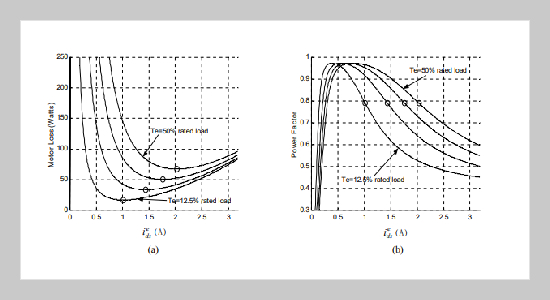REFERENCES
- [1] Ta, C. M. and Hori, Y., “Convergence Improvement of Efficiency-Optimization Control of Induction Motor Drives,” IEEE Transactions on Industry Applications, Vol. 37, pp. 1746-1753 (2001).
- [2] Bose, B. K., Patel, N. R. and Rajashekara, K., “A Neuro-Fuzzy-Based On-Line Efficiency Optimization Control of a Stator FluxOriented Direct Vector-Controlled Induction Motor Drive,” IEEE Transactions on Industrial Electronics, Vol. 44, pp. 270-273 (1997).
- [3] Sousa, G. C. D., Bose, B. K. and Cleland J. G., “Fuzzy Logic Based On-Line Efficiency Optimization Control of an Indirect Vector-Controlled Induction Motor Drive,” IEEE Transactions on Industrial Electronics, Vol. 42, pp. 192-198 (1995).
- [4] Huang, T. C. and El-Sharkawi, M. A., “Induction Motor Efficiency Maximizer Using Multi-layer Fuzzy Control,” Intelligent Systems Applications to Power Systems, Proceedings, ISAP '96, International Conference on, Orlando, FL, U.S.A., pp.109-113 (1996).
- [5] Blaabjerg, F. and Pedersen, J. K., “An Integrated High Power Factor Three-Phase AC-DC-AC Converter for AC-Machines Implemented in One Microcontroller,” IEEE Power Electronics Specialists Conference, Seattle, WA, U.S.A., pp. 285-292 (1993).
- [6] Poirier, E., Ghribi, M. and Kaddouri, A., “Loss Minimization Control of Induction Motor Drives Based on Genetic Algorithms,” Electric Machines and Drives Conference, IEEE International, Cambridge, MA, U.S.A., pp. 475-478 (2001).
- [7] Anderson, H. R. and Pedersen, J. K., “On the Energy Optimized Control of Standard and High-Efficiency Induction Motors in CT and HVAC Applications,” Conference Record of the 1997 IEEE IAS Annual Meeting, New Orleans, LA, U.S.A., pp. 621-628 (1997).
- [8] Fernandez-Bernal, F., Garcia-Cerrada, A. and Faure, R., “Model-Based Loss Minimization for DC and AC Vector-controlled Motors Including Core Saturation,” IEEE Transactions on Industry Applications, Vol. 36, pp. 755-763 (2000).
- [9] Taniguchi, S., Yoshizumi, T. and Matsuse, K., “A Method of Speed Sensorless Control of Direct-Field-Oriented Induction Motor Operating at High Efficiency with Core Loss Consideration,” Applied Power Electronics Conference and Exposition, Vol. 2, pp. 1244-1250 (1999).
- [10] Lu, X. and Wu, H., “Maximum Efficiency Control Strategy for Induction Machine,” Electrical Machines and Systems, Vol. 1, pp. 98-101 (2001).
- [11] Anderson, H. R. and Pedersen, J. K., “Low Cost Energy Optimized Control Strategy for a Variable Speed Three-Phase induction Motor,” Proceedings of the 1996 IEEE-PESC, Maggiore, Italy, Vol. 1, pp. 920-924 (1996).
- [12] Yang, S. M. and Lin, F. C., “LossMinimization Control of Vector-Controlled Induction Motor Drives,” Journal of the Chinese Institute of Engineers, Vol. 26, pp. 37-45 (2003).
- [13] Kirschen, D., Novotny, D. W. and Suwanwisoot, W., “Minimizing induction Motor Losses by Excitation Control in Variable Frequency Drives,” IEEE Trans. on IAS, Vol. 20, pp. 1244-1250 (1984).
















